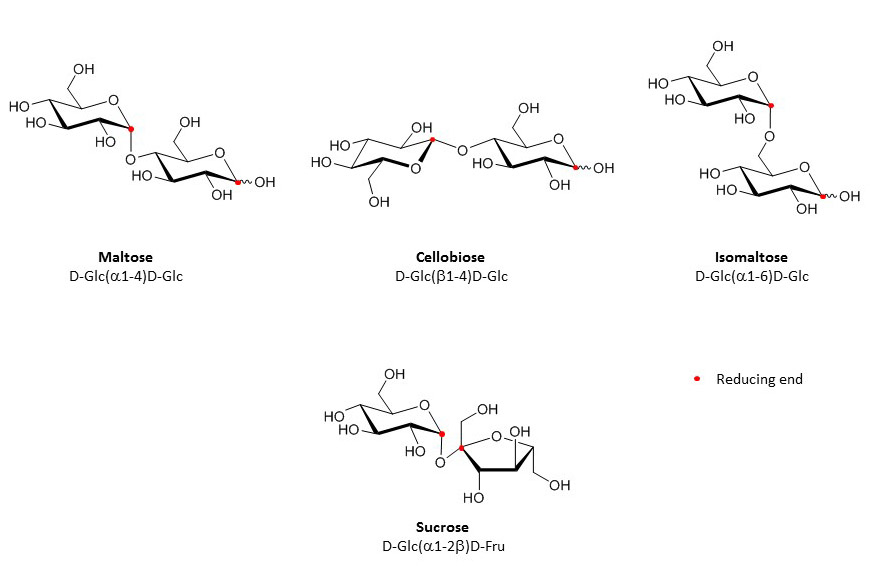Glycosidic linkages
Monosaccharides are bound to each other and to amino acids and lipids via glycosidic linkages. The glycosidic linkage is defined as the link between the anomeric center of a monosaccharide and another residue. To describe the glycosidic linkage between two carbohydrates, there are basically two things to consider: a) the anomeric configuration of the linkage itself and b) the identity of the carbon on the next monosaccharide that shares the bridging oxygen. Carbohydrate chains are named by starting at the last non-reducing monosaccharide and progressing towards the reducing end. The “reducing carbohydrate” is the carbohydrate that still contains a free anomeric carbon. Between each unit, the glycosidic bond is abbreviated by indicating the anomerism and the respective number of the C-atoms involved in the linkage. Based on this system, the disaccharide maltose is written as D-Glc-α(1-4)-D-Glc.
Figure 11. Chair representation of common disaccharides. Reducing ends are marked with a red dot. Glucose and fructose are linked through their respective reducing ends in sucrose.
There are multiple isomers of maltose since there are multiple ways to connect two Glc units. These consist of kojibiose (α1-2), nigerose (α1-3), isomaltose (α1-6), sophorose (β1-2), laminaribiose (β1-3), cellobiose (β1-4), and gentiobiose (β1-6). By contrast, disaccharides, like sucrose and trehalose, are connected through their reducing ends. These non-reducing disaccharides do not react positively in the Fehling test for free aldehydes. Note that the α or β configurations are no longer “free” in glycosidic linkages. The anomerism is in fact very important in conferring specific physical and chemical properties to oligosaccharides and polysaccharides, as outlined for starch and cellulose here above.
